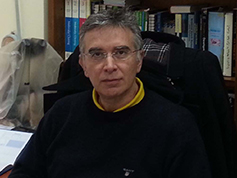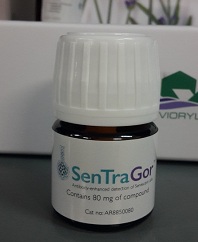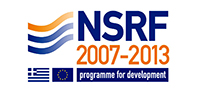Implication of senescence in giant cell arteritis
The pathogenic role of cellular senescence in the context of Giant Cell Artiritis (GCA), an age-related, autoinflammatory and autoimmune syndrome has not been addressed before. This study identified a high proportion of senescent cells (mainly fibroblasts and macrophages) with an inflammatory phenotype in GCA arteries. The presence of senescent cells was associated with the tissue inflammatory bulk via IL-6-dependent pathways, suggesting a potential implication of senescence in disease pathogenesis. These results set the ground for the use of senolytic treatments as a possible complementary strategy in the clinical management of GCA.
A fluorophore-conjugated reagent enabling rapid detection, isolation and live tracking of senescent cells
Cellular senescence is a stress-response mechanism implicated in various physiological processes, diseases, and aging. Current detection approaches have partially addressed the issue of senescent cell identification in clinical specimens. Effective methodologies enabling precise isolation or live tracking of senescent cells are still lacking. In-depth analysis of truly senescent cells is, therefore, an extremely challenging task. Here we report (1) the synthesis and validation of a fluorophore-conjugated, Sudan Black-B analog (GLF16), suitable for in vivo and in vitro analysis of senescence by fluorescencemicroscopy and flow cytometry and (2) the development and application of a GLF16-carrying micelle vector facilitating GLF16 uptake by living senescent cells in vivo and in vitro. The compound and the applied methodology render isolation of senescent cells an easy, rapid, and precise process. Straightforward nanocarrier-mediated GLF16 delivery in live senescent cells comprises a unique tool for characterization of senescence at an unprecedented depth.
Cellular senescence and cardiovascular diseases
Cellular senescence has been the subject of focused research for over two decades, however it was not until recently that the role of senescence in cardiovascular disease (CVD) started to be explored. A body of evidence has shown that cellular senescence constitutes a stress-mediated pathophysiological mechanism implicated in a wide range of CVDs at the cellular and molecular level. In this review, we recapitulate key molecular and clinical findings supporting the involvement of senescence in heart disease and discuss current clinical strategies aimed at eradicating the detrimental effects of senescence on cardiac homeostasis. Based on recent evidence, we additionally address how the advent of the senotherapeutics field, in conjunction with the development of novel senescence detection tools in tissues and biological fluids may now facilitate effectively combating CVDs.
Machine learning: a tool to shape the future of medicine
The constant evolution of biomedicine, biophysics and biochemistry has enabled scientists to investigate and study each cell identity via analyzing the transciptome and its kinetics, the chromatin accessibility patterns but also via investigating the structure of proteins and RNA. Taking all this under consideration, scientists have developed algorithms and machine learning (ML) schemes that take advantage of the current state-of-the-art approaches to predict the cell states, discover the exact 3D structure of proteins and RNA and most importantly evaluate personalized medicine approaches via predicting drugs and specific immunotherapy treatments. Moreover, the recent advances in ML and chemo-informatics have also paved the way for drug repurposing models, thus evaluating and establishing in silico novel treatments. The aim of this chapter is to provide and analyze the mathematics behind such ML techniques and review the current applications being developed that walk side by the side with the continuous progress of biosciences.
Pulmonary infection by SARS-CoV-2 induces senescence accompanied by an inflammatory phenotype in severe COVID-19: possible implications for viral mutagenesis
In patients with severe COVID-19, alveolar type II (AT2) cells that are infected with SARS-CoV-2 undergo senescence accompanied also by an inflammatory phenotype. In vitro recapitulation of SARS-CoV-2 infection in two-dimensional (2D) cellular systems and in a three-dimensional alveosphere system derived from alveolar type 2 (AT2) cells, also induced senescence and inflammation. Importantly, infected cells can act as a source of mutagenesis for SARS-CoV-2, since they exhibit increased levels of the APOBEC deaminating enzymes, which can mediate viral mutations. Overall these findings support that SARS-CoV-2 induced senescence may be an important driver of COVID-19 severity, disease persistence and the emergence of new viral strains. Finally, SARS-CoV-2-induced senescence may justify the implementation of senotherapeutics for the treatment of COVID-19 patients and possibly for long-COVID syndrome.
RASSF1A-mediated mechanism controlling tumor dedifferentiation and aggressive oncogenic behavior
This study is a continuation of many previous research articles on lung cancer development that represented the first investigation target, from the initiation of our research group (MCG). Particularly, it shows that the RASSF1A tumor suppressor uncouples the NOTCH-HES1 axis by triggering SNURF/RNF4-mediated HES1 ubiquitination. Loss of RASSF1A promotes cancer stemness via NOTCH-independent HES1 stabilization and confers resistance to γ-secretase inhibitors (GSI). This is the first evidence of crosstalk between the Hippo and Notch pathways, through the RASSF1A tumor suppressor. The study provides insight into the clinical setting where the use of GSIs constitutes a productive therapeutic approach in oncology.
Escape from oncogene-induced senescence
The manuscript provides evidence on how senescent cells escape from oncogene induced senescence, an important tumor suppressor mechanism, facilitating tumor progression. Particularly the authors demonstrate that a recurrent chromosomal inversion harboring the circadian gene BHLHE40 is sufficient to drive escape from oncogene-induced senescence. The inversion is the outcome of oncogene-mediated genomic instability followed by chromatin refolding changes that activate the gene, leading to cell cycle re-entry and aggressive behavior. These findings support that replication stress-induced genomic instability is the causative factor underlying ‘‘escape’’ from oncogene-induced senescence and that targeting senescent cells can be of major clinical importance by eliminating a potential source of recurrence.
Algorithmic assessment of cellular senescence in experimental and clinical samples
Unequivocal identification and examination of cellular senescence remains highly difficult because of the lack of universal and specific markers. To overcome the limitation of measuring individual markers, we describe a detailed two-phase algorithmic assessment to quantify various senescence-associated parameters in the same specimen. In the first phase, we combine the measurement of lysosomal and proliferative features with the expression of general senescence-associated genes to validate the presence of senescent cells. In the second phase we measure the levels of pro-inflammatory markers for specification of the type of senescence. The protocol can help graduate-level basic scientists to improve the characterization of senescence-associated phenotypes and the identification of specific senescent subtypes. Moreover, it can serve as an important tool for the clinical validation of the role of senescent cells and the effectiveness of anti-senescence therapies.
Kohli J, Wang B, Brandenburg SM, Basisty N, Evangelou K, Varela-Eirin M, Campisi J, Schilling B, Gorgoulis V, Demaria M. Algorithmic assessment of cellular senescence in experimental and clinical specimens. Nature Protocols 2021. 2021 May;16(5):2471-2498.
|
|
|
Prof. Vassilis G. Gorgoulis
Laboratory of Histology-Embryology
Chair of Clinical Molecular Pathology, Ninewells Hospital and School of Medicine
University of Dundee, Dundee, UK
Biomedical Research Foundation of the Academy of Athens
Faculty Institute for Cancer Sciences, University of Manchester, Manchester Centre for Cellular Metabolism,
EMBO member
European Academy
Academia Europaea member
Intelligencia.ai, 180 Varick Street, 6th Floor, New York, NY 10014, USA
Office Tel: 0030 210-7462352 |
News
Error: No articles to display














